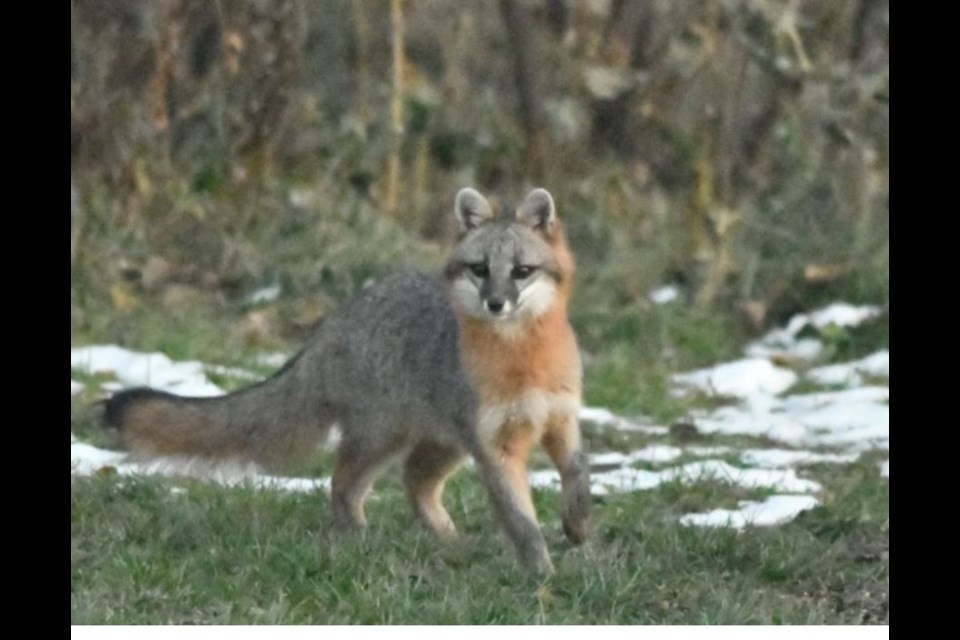THUNDER BAY — If you spot a gray fox – better still, if you've got a photo or video – the Thunder Bay Field Naturalists want to hear from you.
The little-known relative of the red fox is a species at risk both in Ontario and across Canada, but it's showing up in increasing numbers in this area.
Although Northwestern Ontario is at the northern edge of its range, sightings began to pick up in the Thunder Bay region about 15 years ago.
Rob Foster, a biologist and co-lead of TBFN's gray fox project, says we may now have the largest breeding gray fox population in Canada.
Elsewhere in Ontario, there are smaller groups in the Fort Frances area and on Pelee Island in Lake Erie.
Foster said it's not a Boreal species but the range of the gray fox may be creeping northward from Minnesota because of recent milder winters and less snow.
"As a species at risk, we're trying to understand its biology and the ecology better so that we can help support its recovery. There's a national and a provincial plan for recovery because it had declined along the southern edge of Canada. Additional information might help resource professionals and managers better protect the species, help it increase in numbers and do better in the local landscape."
A good spot to capture evidence of their presence is at a bird feeder, especially if it's filled with sunflower seeds or suet.
Gray foxes are omnivorous, and can even climb trees to eat crabapples, as this video taken in the Thunder Bay area demonstrates.
Telling it apart from a red fox, and in particular from the "cross fox" phase of the red fox, can be a challenge.
The gray fox is slightly smaller, with shorter legs, a shorter muzzle and a longer tail. It also has a light gray tail with a darker strip along the top and a distinctive black tip.
The cross fox tends to have a more uniformly coloured tail, usually with a white tip.
Images of all three are posted online by TBFN.
The field naturalists group encourages local residents to stay vigilant for gray foxes near bird feeders, especially at dawn, dusk and after dark, and to place cameras there or along game trails.
Gray fox sightings can be reported – including with any photos and location details – to [email protected] and at www.inaturalist.ca.
Foster said TBFN has received numerous submissions with photos and video from local residents, but would like to receive as many as possible.
